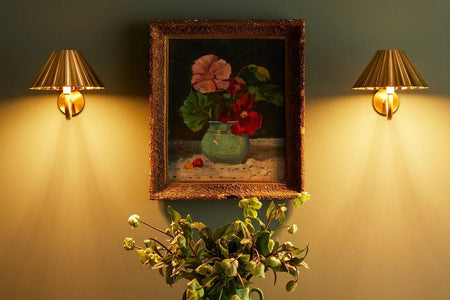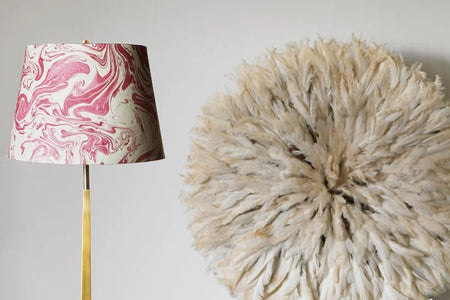
In the latest of our series exploring why we love patterns, we turn to the greatest designer of all—nature itself…
Many patterns we describe as geometric have existed for millennia in plants, flowers, and seashells, simply waiting to be observed and named. We’ve been on our own voyage of discovery through nature’s patterns—and, unsurprisingly given Rohan’s interests, many of those patterns have found their way into Pooky lighting and accessories
Nature’s patterns—the bigger picture

Patterns of all kinds are everywhere in nature—from trees and leaves to ripples on a pond and the perfect spirals of bees’ honeycombs. Even human DNA follows a spiral pattern: we are, in a sense, hardwired by pattern.
If we think of pattern purely in aesthetic terms, we miss the deeper connection: everything and everyone is linked through an intricate web of life. Research shows that spending time in nature, and being surrounded by its patterns, can reduce stress and boost wellbeing.
Patterns of the natural world

Nature’s patterns are so familiar we often take them for granted—but they are extraordinary. They represent nature’s toolkit: a fusion of mathematics, physics, and biology, beautifully wrapped in perfect form. When you echo them in your home, you’re tapping into that quiet brilliance and creating interiors that resonate with natural harmony.
Here are some of nature’s favourite blueprints…
Symmetry

If you’ve ever battled an unruly garden, you might think nature is random—chaos in action. But in truth, nature loves symmetry and order: it aids balance and function. Think of leaves along a stem, or petals around a flower’s centre.
We’re rather fond of symmetry too. A pair of bedside lamps or a neat row of pendants above a kitchen island offers the same pleasing balance—form and function in harmony.
Pooky style

Matched table lamps on either side of a bed frames a bedroom and helps to create . feeling of calm and balance essential for a good night’s sleep. This bedroom by Interior designer Sean Symington features our Nellie table lamps in emerald.
Branching

Branching is one of nature’s most elegant and functional designs. It enables distribution—of water, nutrients, and energy—whether through the limbs of a tree, the veins of a leaf, coral reefs, or river deltas.
Pooky style

Our Emerald Little Magnolia shade—a design classic from G P & J Baker since 1913—captures that beauty wonderfully. Its exuberant pattern celebrates the tradition of the flowering trees to be found in antique hand painted Chinese wall panels.
Animal crackers
From zebra stripes to leopard spots, animal patterns serve as camouflage in the wild—but in our homes, they bring energy and verve. Bold, primal, and timeless, animal prints never stray far from fashion.
Pooky style

When it comes to animal inspiration, Matthew Williamson is our go-to designer. Our Natural Disco Zebra lampshade began life as a zebra skin with abstract stripes but evolved into something looser and more painterly. Meanwhile, his Leopard Love lampshade reimagines the classic allure of animal print—with painterly leopard spots coalescing into love-heart motifs.
Crystals and tessellations

Snowflakes, honeycombs, and mineral formations all display geometric tessellations—shapes that fit together perfectly with no gaps. They embody strength, order, and repetition.
Pooky style

Our Conchita chandelier in prismatic glass and brass is unapologetically gorgeous, with forty cut-glass drops that catch and scatter light. Hung in a hallway, it sends a reassuringly solid (and dazzling) welcome to your guests.
Waves and ripples

When we think of waves, we picture the sea—but the same pattern appears in ripples on a pond, wind-blown grass, shifting sand dunes, and even in weathered rock formations.
Pooky style

Our Hot Pink Ripples shade, made of hand-painted card, is unique—no two are exactly alike, just like nature’s waves. Gently mesmerising.
Want to know more?
If we have piqued your curiosity, we recommend Patterns in Nature: Why the Natural World Looks the Way it Does by Philip Ball. The author explores spirals, waves, fractals, and other recurring natural patterns, revealing the mathematical and physical principles behind them—and showing how everything from river branches to tiger stripes follows the same fundamental order.
Browse all our lights and shades – and find your own favourite patterns – here.
Top: Four zebras, four unique sets of stripes. Photo by David Tomaseti on Unsplash



